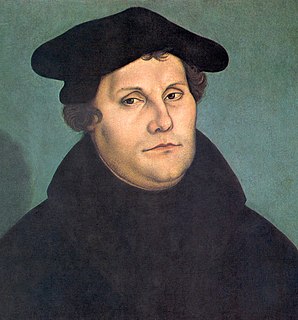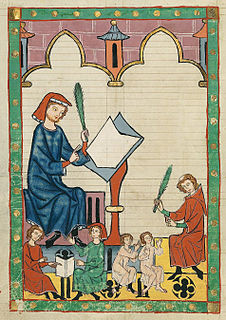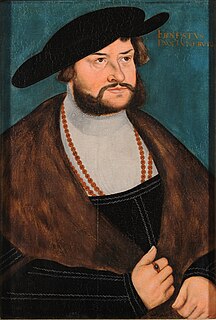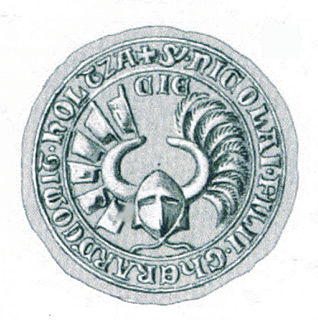| Henry V of Mecklenburg | |
|---|---|
 Henry V of Mecklenburg | |
| Born | 3 May 1479 |
| Died | 6 February 1552 (aged 72) Schwerin |
| Spouse | Ursula of Brandenburg Helen of the Palatinate Ursula of Saxe-Lauenburg |
| House | House of Mecklenburg |
| Father | Magnus II |
| Mother | Sophie of Pomerania-Stettin |

Henry V, Duke of Mecklenburg, nicknamed the Peaceful (3 May 1479 – 6 February 1552), was the reigning Duke of Mecklenburg in the region Mecklenburg-Schwerin, the son of Duke Magnus II and Sophie of Pomerania-Stettin.

The Duchy of Mecklenburg-Schwerin was a duchy in northern Germany created in 1701, when Frederick William and Adolphus Frederick II divided the Duchy of Mecklenburg between Schwerin and Strelitz. Ruled by the successors of the Nikloting House of Mecklenburg, Mecklenburg-Schwerin remained a state of the Holy Roman Empire along the Baltic Sea littoral between Holstein-Glückstadt and Duchy of Pomerania.

Magnus II, Duke of Mecklenburg-Schwerin and Güstrow was duke of Mecklenburg-Schwerin from 1477 until his death.
Contents
Henry ruled jointly with his brothers Eric II and Albert VII and his uncle Balthasar from 27 December 1503. Balthasar died on 16 March 1507 and Eric on 22 December 1508, both without an heir, thus Henry and Albert came into possession of the whole country. They ruled jointly at first. Albert repeatedly advocated the division of the territories of Mecklenburg, and this was agreed to in the House Treaty of Neubrandenburg, sealed on 7 May 1520. The treaty stipulated that Henry rule in Schwerin and Albert in Güstrow, without a de facto division of the country.
Eric II, Duke of Mecklenburg was Duke of Mecklenburg, a son of Magnus II, Duke of Mecklenburg, and his wife Sophie of Pomerania-Stettin.
Balthasar of Mecklenburg was a Duke of Mecklenburg and Coadjutor of the Diocese of Hildesheim between 1471 and 1474 and the Diocese of Schwerin between 1474 and 1479.

Schwerin is the capital and second-largest city of the northeastern German state of Mecklenburg-Vorpommern. It has a population of about 100,000.
It was during the reign of the brothers Henry and Albert that Martin Luther launched the Reformation, which quickly found supporters in Mecklenburg. Lutheran doctrine was preached there more or less openly as early as 1523 and perhaps even earlier. Duke Henry supported the new doctrine from the beginning, at first in a very cautious manner, and but more openly after the Diet of Augsburg in 1530. He corresponded with Luther beginning in 1524, and Luther sent him teachers and preachers.

Martin Luther, was a German professor of theology, composer, priest, monk, and a seminal figure in the Protestant Reformation.

The Reformation was a movement in Western Christianity in 16th-century Europe. Although the Reformation is usually considered to have started with the publication of the Ninety-five Theses by Martin Luther in 1517, there was no schism between the Catholics and the nascent Lutheran branch until the 1521 Edict of Worms. The edicts of the Diet condemned Luther and officially banned citizens of the Holy Roman Empire from defending or propagating his ideas. The end of the Reformation era is disputed, it could be considered to end with the enactment of the confessions of faith which began the Age of Orthodoxy. Other suggested ending years relate to the Counter-Reformation, the Peace of Westphalia, or that it never ended since there are still Protestants today.

The Diet of Augsburg were the meetings of the Imperial Diet of the Holy Roman Empire held in the German city of Augsburg. Both an Imperial City and the residence of the Augsburg prince-bishops, the town had hosted the Estates in many such sessions since the 10th century. In the 16th century, twelve of thirty-five imperial diets were held in Augsburg, a result of the close financial relationship between the Augsburg-based banking families such as the Fugger and the reigning Habsburg emperors, particularly Maximilian I and his grandson Charles V. Nevertheless, the meetings of 1530, 1547/48 and 1555, during the Reformation and the ensuing religious war between the Catholic emperor and the Protestant Schmalkaldic League, are especially noteworthy.
Henry joined the League of Torgau on 12 June 1526, and in 1532 he finally came out publicly as a supporter of Luther. Naturally, his position led him to give the new doctrine a firm external and internal organization, so he asked Superintendent Johann Riebling, whom Luther had recommended to him in 1537, to draft a Church Order, a Catechism and an Agenda. For the remainder of his reign, he was occupied with the organization of the Lutheran church.
The League of Torgau was an alliance of Lutheran princes, including Philip of Hesse and John of Saxony, which was formed 27 February 1526 to oppose the terms set forth in the Edict of Worms. Because it had no substantial military, it was unable to achieve religious or political influence. 1531 saw the formation of the Schmalkaldic League, a similar alliance but which included an army of 10,000 infantry and 2,000 cavalry. This league lasted for sixteen years and was more successful in reaching its demands. The League of Torgau was set up soon after the 1526 Imperial Diet of Speyer.
The Church Order or Church Ordinance means the general ecclesiastical constitution of a State Church.

A catechism is a summary or exposition of doctrine and serves as a learning introduction to the Sacraments traditionally used in catechesis, or Christian religious teaching of children and adult converts. Catechisms are doctrinal manuals – often in the form of questions followed by answers to be memorised – a format that has been used in non-religious or secular contexts as well. The term catechumen refers to the designated recipient of the catechetical work or instruction. In the Catholic Church, catechumens are those who are preparing to receive the Sacrament of Baptism. Traditionally, they would be placed separately during Holy Mass from those who had been baptized, and would be dismissed from the liturgical assembly before the Profession of Faith (Creed) and General Intercessions.
After Luther's death, a religious war erupted in Germany. Henry, however, did not participate; although he was a Protestant prince, he was not a member of the Schmalkaldic League. He resisted the introduction of the Augsburg Interim by Emperor Charles V in 1548. Henry approved the decision of the Mecklenburg estates of July 1549 that formally recognized by the Lutheran doctrine. Soon after, on 6 February 1552, he died with the reputation of a pious and peaceable prince.

The Schmalkaldic League ; was a military alliance of Lutheran princes within the Holy Roman Empire during the mid-16th century. Although originally started for religious motives soon after the start of the Reformation, its members later came to have the intention that the League would replace the Holy Roman Empire as their focus of political allegiance. While it was not the first alliance of its kind, unlike previous formations, such as the League of Torgau, the Schmalkaldic League had a substantial military to defend its political and religious interests. It received its name from the town of Schmalkalden, which is located in modern Thuringia.
The Augsburg Interim was an imperial decree ordered on 15 May 1548 at the 1548 Diet of Augsburg by Charles V, Holy Roman Emperor, who had just defeated the forces of the Protestant Schmalkaldic League in the Schmalkaldic War of 1546/47. Although it ordered Protestants to readopt traditional Catholic beliefs and practices, including the seven Sacraments, it allowed for Protestant clergymen the right to marry and for the laity to receive communion in both kinds. It is considered the first significant step in the process leading to the political and religious legitimization of Protestantism as a valid alternative Christian creed to Roman Catholicism finally realized in the 1552 Peace of Passau and the 1555 Peace of Augsburg. The Interim became Imperial law on 30 June 1548. The Pope advised all bishops to abide by the concessions made to the Protestants in the Interim in August 1549.















